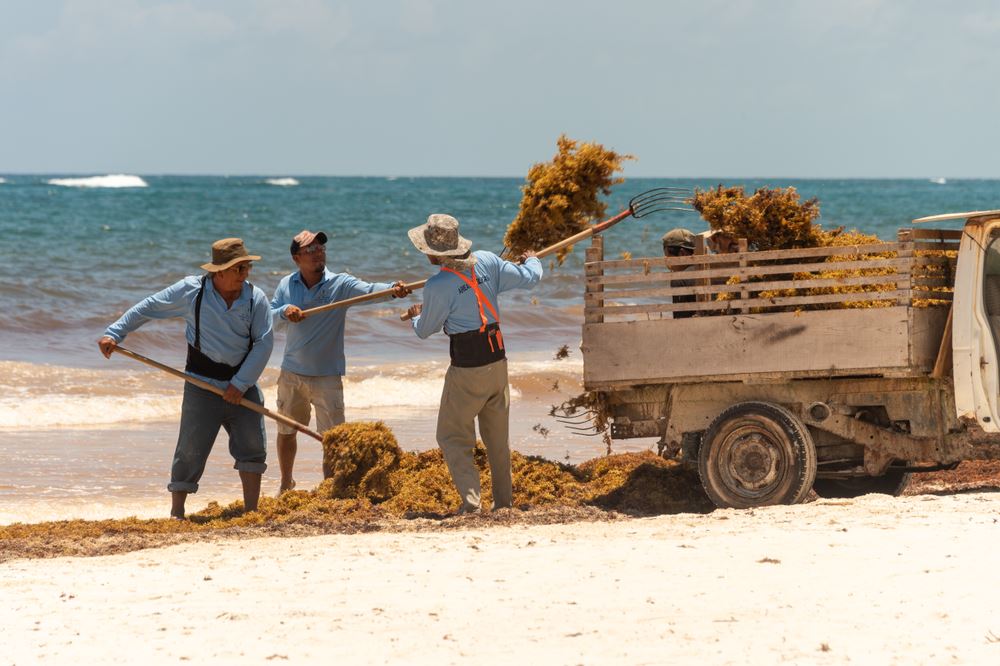As Mexico invests millions to remove over half a million tons of sargassum seaweed from its Caribbean beaches, Bahia Principe Hotels & Resorts has also undertaken action to clean the white-sand beaches for tourists.
The resort operator said it put in place a non-invasive barrier system and saw “a 95% reduction” of sargassum on its Mexico properties. The system was put in place by a team of marine biologists, oceanographers, engineers and divers, and operates with respect to the marine fauna and flora.
It is part of Bahia Principe’s Comprehensive Coastal Management Plan, implemented to re-establish the natural balance of local ecosystems in the areas that the brand operates.

According to the Cancun sargassum monitoring network, most beaches on Mexico’s Yucatan Peninsula are currently affected by “abundant” amounts of sargassum, the second highest warning level. As of Monday July 23, large amounts of sargassum affected 33 coastal tourist areas.
Mexican government officials have cautioned the massive influx of rotting seaweed in Quintana Roo beach destinations may cause a dip in tourism, which contributes 8.7% to Mexico’s gross domestic product and is worth around $23 billion annually.
Regional occupancy rates are running behind last year’s pace and room rates have dropped nearly 20%, according to the business magazine Expansíon.
“Last year in July we already had 80% of hotel reservations and today there are some that have not reached the figure. And to recover that market that has not booked, rates have decreased,” Roberto Cintrón, president of the Hotel Association of Cancun and Puerto Morelos, told the outlet.
The floating seaweed rafts, sometimes miles long, have plagued Mexico and Caribbean islands since the first mass was spotted in 2011. The phenomenon has only gotten worse, contributing to an economic and ecological crisis.
Caused by a surplus nutrients being washed into rivers and flowing into the ocean, the rising nutrient and nitrogen levels promote the growth of seaweed and algal blooms. Once they wash ashore, the algae dies and starts to decompose. Toxic gases are released into the air, causing a rotting egg smell, while acid and heavy metals are left behind to make their way into the sea, altering the water’s acidity levels and further depleting oxygen.
According to a new paper published in Science, there’s a high the possibility that recurrent blooms in the tropical Atlantic and Caribbean Sea may become the new norm.
Source: Travel Pulse
